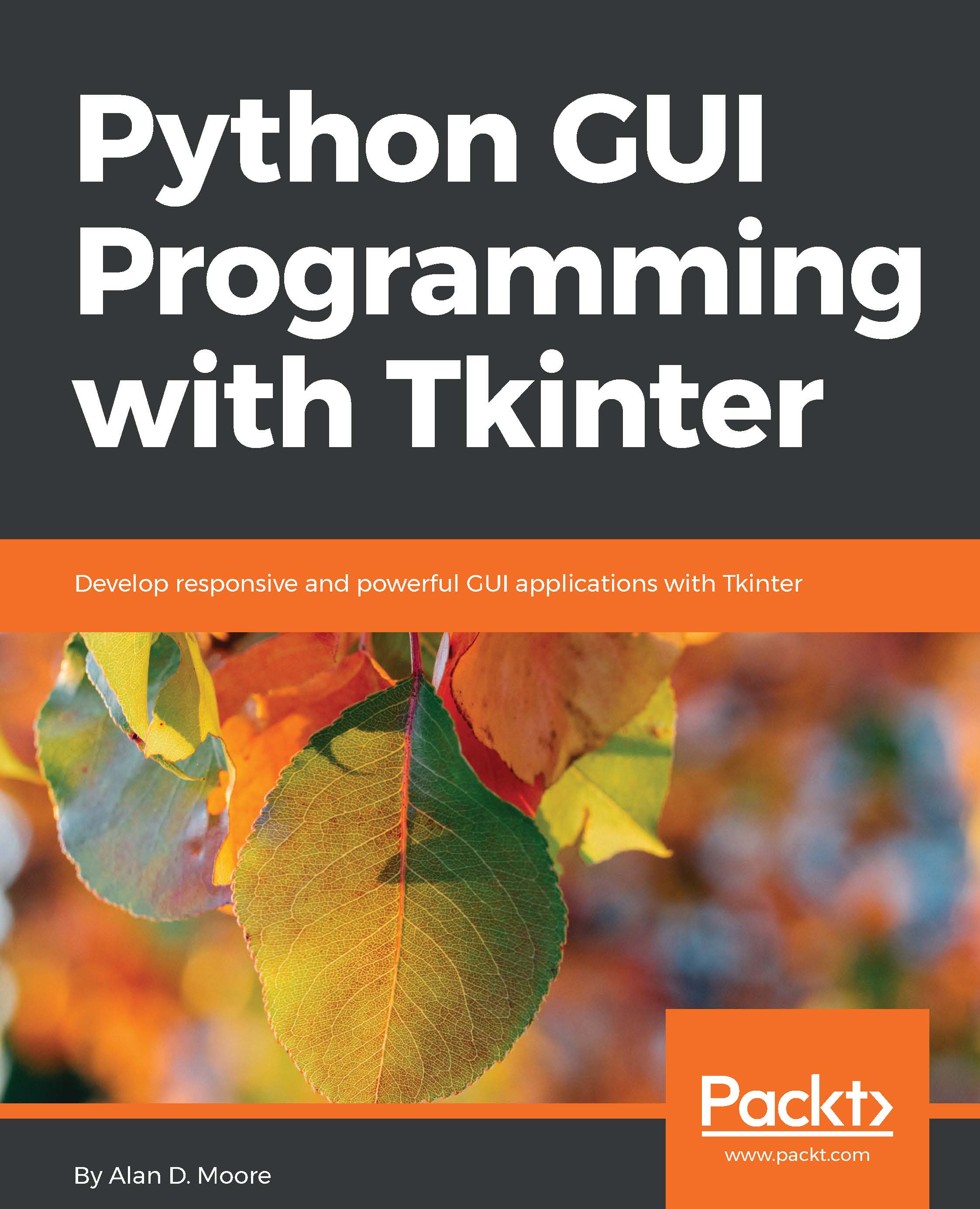-
Book Overview & Buying

-
Table Of Contents

Python GUI Programming with Tkinter
By :

Python GUI Programming with Tkinter
By:
Overview of this book
Tkinter is a lightweight, portable, and easy-to-use graphical toolkit available in the Python Standard Library, widely used to build Python GUIs due to its simplicity and availability. This book teaches you to design and build graphical user interfaces that are functional, appealing, and user-friendly using the powerful combination of Python and Tkinter.
After being introduced to Tkinter, you will be guided step-by-step through the application development process. Over the course of the book, your application will evolve from a simple data-entry form to a complex data management and visualization tool while maintaining a clean and robust design. In addition to building the GUI, you'll learn how to connect to external databases and network resources, test your code to avoid errors, and maximize performance using asynchronous programming. You'll make the most of Tkinter's cross-platform availability by learning how to maintain compatibility, mimic platform-native look and feel, and build executables for deployment across popular computing platforms.
By the end of this book, you will have the skills and confidence to design and build powerful high-end GUI applications to solve real-world problems.
Table of Contents (17 chapters)
Preface
 Free Chapter
Free Chapter
Introduction to Tkinter
Designing GUI Applications with Tkinter
Creating Basic Forms with Tkinter and ttk Widgets
Reducing User Error with Validation and Automation
Planning for the Expansion of Our Application
Creating Menus with Menu and Tkinter Dialogs
Navigating Records with Treeview
Improving the Look with Styles and Themes
Maintaining Cross-Platform Compatibility
Creating Automated Tests with unittest
Improving Data Storage with SQL
Connecting to the Cloud
Asynchronous Programming with Thread and Queue
Visualizing Data Using the Canvas Widget
Packaging with setuptools and cx_Freeze
Other Books You May Enjoy

